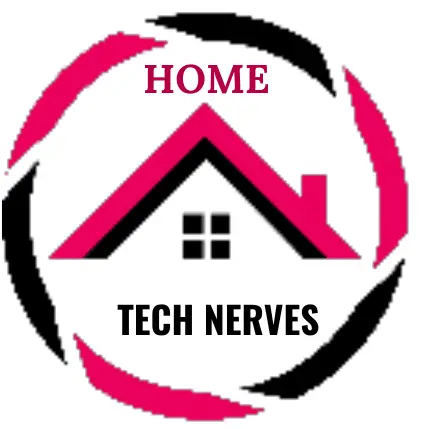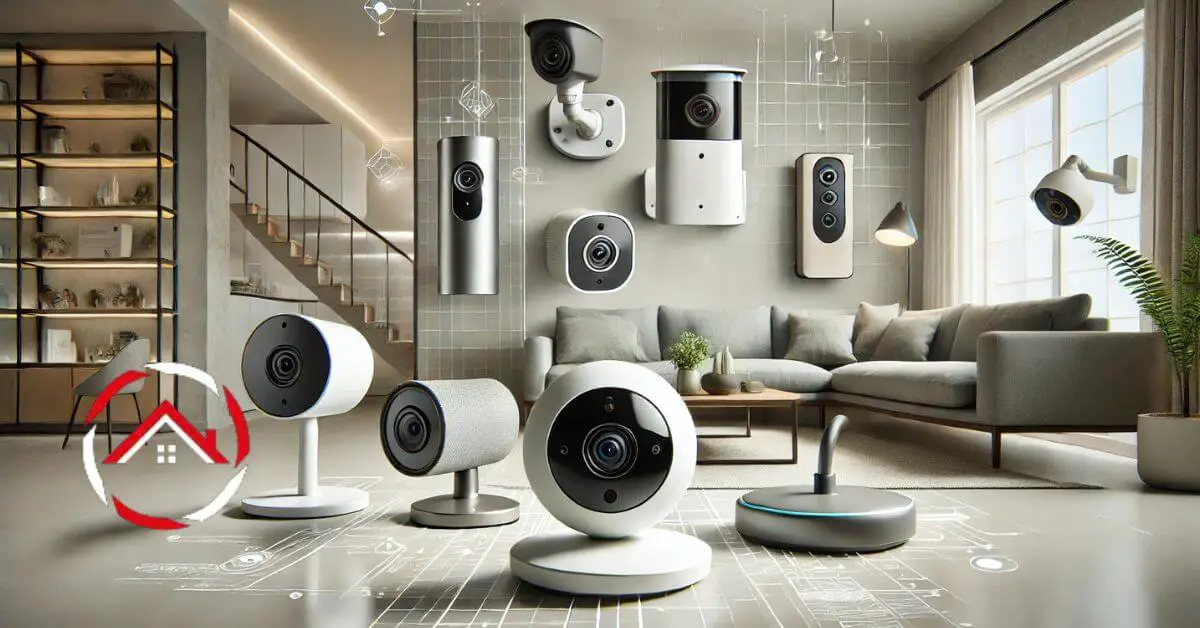Looking for the best indoor cameras to keep your home safe? With so many options, it can be hard to pick the right one.
Indoor cameras help you monitor your space, whether you’re home or away. They offer features like motion detection, two-way audio, and night vision.
You can stay connected with your home in real-time, using just your phone. Whether you want to check on pets, kids, or overall security, these cameras give peace of mind.
Let’s explore the top choices for reliable and easy-to-use indoor security cameras. They’re simple to set up and offer great protection.
Disclosure: This post contains affiliate links. If you purchase through these links, I may earn a small commission at no extra cost to you.
Read more: Home Security Cameras
Table of Contents
What is the Best Overall Indoor Camera?
When choosing the best overall indoor camera, several brands stand out for quality and features.
Google Nest Cam Indoor tops the list with excellent video quality and smart integration with Google Home.
Arlo Essential Indoor Camera is known for its clear footage and versatile placement.
Ring Indoor Cam offers affordable security with easy setup and seamless Alexa integration.
Wyze Cam v3 delivers impressive features at a budget-friendly price, including color night vision.
Eufy Indoor Cam 2K provides high-resolution footage and AI detection, making it a great all-around option. These cameras balance functionality, ease of use, and price perfectly.
Comparison Table for the Best Indoor Cameras:
| Camera Model | Key Features | Buy on Amazon |
|---|---|---|
| Google Nest Cam Indoor | 1080p HD, 24/7 Live Video, Motion Detection | Buy on Amazon |
| Arlo Essential Indoor | 1080p HD, Privacy Shield, Night Vision | Buy on Amazon |
| Ring Indoor Cam | 1080p HD, Compact Design, Motion-Activated Recording | Buy on Amazon |
| Wyze Cam v3 | 1080p HD, Color Night Vision, Weather-Resistant | Buy on Amazon |
| Eufy Indoor Cam 2K | 2K HD, AI Motion Detection, Two-Way Audio | Buy on Amazon |
Types of Indoor Cameras
Looking for the right indoor camera can be overwhelming with so many types available.
Each type serves a specific need, from simple home monitoring to advanced security features.
Let’s explore the different types of indoor cameras and what makes each unique.
1. Wired Indoor Cameras
- Require direct connection to power and network.
- Offer consistent power supply and stable connection.
- Ideal for long-term, stationary monitoring.
2. Wireless Indoor Cameras
- Connect to Wi-Fi without cables.
- Easy to install and relocate.
- Suitable for flexible or temporary setups.
3. Smart Indoor Cameras
- Integrated with smart home systems like Alexa or Google Home.
- Feature advanced options like voice control and automation.
- Great for tech-savvy users seeking convenience.
4. Pan-Tilt-Zoom (PTZ) Indoor Cameras
- Allow remote control of the camera’s movement.
- Offer wide coverage with panning and zooming features.
- Perfect for monitoring large areas with fewer cameras.
5. Fixed Indoor Cameras
- Focus on a single spot without moving.
- Typically more affordable and simple to use.
- Best for monitoring specific entry points or rooms.
6. Battery-Powered Indoor Cameras
- Operate on rechargeable batteries, no need for power outlets.
- Portable and easy to place anywhere.
- Useful for areas without convenient power access.
7. Indoor Cameras with Night Vision
- Capture clear footage in low light or complete darkness.
- Use infrared technology for enhanced night-time security.
- Ideal for 24/7 surveillance and peace of mind.
Factors to Consider When Choosing an Indoor Camera
When choosing an indoor camera, several factors help ensure you get the best fit for your needs. Whether it’s for security, monitoring, or convenience, the right features can make a big difference. Here are the key factors to consider:
1. Video Quality
- Look for cameras with at least 1080p resolution.
- Higher quality ensures clearer footage for easier identification.
- Consider options with night vision for low-light conditions.
2. Field of View
- Wide-angle lenses cover more area.
- Cameras with adjustable fields of view offer more flexibility.
- Consider if you need a fixed or rotating view.
3. Smart Home Integration
- Compatibility with systems like Google Home, Alexa, or Apple HomeKit.
- Allows for automation and remote control through voice or apps.
- Essential for users who have a smart home setup.
4. Storage Options
- Choose between cloud storage and local storage (SD cards).
- Cloud storage often requires a subscription but offers more capacity.
- Local storage is typically free but may have limited space.
5. Motion Detection
- Look for cameras with advanced motion detection features.
- Some cameras offer AI-based detection to reduce false alerts.
- Alerts sent to your phone can enhance home security.
6. Two-Way Audio
- Enables communication with anyone near the camera.
- Useful for checking on kids, pets, or visitors.
- Adds an interactive element to your monitoring setup.
7. Installation and Setup
- Wireless cameras are easier to install but may require battery changes.
- Wired cameras provide a stable connection but involve more complex installation.
- Consider how much effort you’re willing to invest in setup.
8. Privacy Features
- Some cameras come with privacy shutters or software to turn off recording.
- Choose a camera that gives you control over when it’s active.
- Important for maintaining privacy in personal spaces.
By considering these factors, you can choose an indoor camera that meets your needs and provides peace of mind.
Top Brands and Models of Indoor Cameras
Here’s a look at some of the top brands and models of indoor cameras, each offering unique features to enhance your home security:
1. Google Nest Cam Indoor
- Resolution: 1080p Full HD
- Key Features: Intelligent alerts, 24/7 live video, and night vision.
- Smart Integration: Works with Google Home for seamless connectivity.
- Best For: Users seeking high-quality video and smart home compatibility.
| Google Nest Cam Indoor |
|---|
| Top Features: |
| ✔ 1080p HD Video – Clear and detailed live streaming |
| ✔ Night Vision – Clear footage in low-light conditions |
| ✔ Two-Way Audio – Communicate with people or pets |
| ✔ 24/7 Live Streaming – Continuous monitoring |
| ✔ Motion and Sound Alerts – Instant notifications |
| Customer Ratings: ★★★★☆ (4.6/5) |
| Buy on Amazon |
2. Arlo Essential Indoor Camera
- Resolution: 1080p Full HD
- Key Features: Motion detection, two-way audio, and a privacy shield.
- Smart Integration: Compatible with Alexa and Google Assistant.
- Best For: Those prioritizing privacy and ease of use.
| Arlo Essential Indoor Camera |
|---|
| Top Features: |
| ✔ 1080p HD Video – Clear and detailed live streaming |
| ✔ Automated Privacy Shield – Ensures your moments stay private |
| ✔ Night Vision – Clear footage in low-light conditions |
| ✔ Two-Way Audio – Communicate with people or pets |
| ✔ Built-in Siren – Deter intruders with a loud siren |
| Customer Ratings: ★★★★☆ (4.5/5) |
| Buy on Amazon |
3. Ring Indoor Cam
- Resolution: 1080p Full HD
- Key Features: Compact design, motion-activated recording, and two-way talk.
- Smart Integration: Integrates with Amazon Alexa.
- Best For: Affordable security solutions with easy setup.
| Ring Indoor Cam (2nd Gen) |
|---|
| Top Features: |
| ✔ 1080p HD Video – Clear and detailed live streaming |
| ✔ Color Night Vision – Enhanced visibility in low-light conditions |
| ✔ Two-Way Talk with Audio+ – Communicate with people or pets |
| ✔ Built-in Privacy Cover – Ensures your moments stay private |
| ✔ Remote-Activated Siren – Deter intruders with a loud siren |
| Customer Ratings: ★★★★☆ (4.5/5) |
| Buy on Amazon |
4. Wyze Cam v4
- Resolution: 1080p Full HD
- Key Features: Color night vision, weather resistance, and free cloud storage.
- Smart Integration: Works with Google Assistant and Alexa.
- Best For: Budget-conscious users looking for robust features.
| Wyze Cam v4 |
|---|
| Top Features: |
| ✔ 2.5K QHD Resolution – Capture images and video in greater detail with Quad High Definition clarity. |
| ✔ Color Night Vision – See important details in color, even at night. |
| ✔ Enhanced Two-Way Talk – Talk to anyone easily with a more powerful amplifier and updated mic for clearer camera audio. |
| ✔ Integrated Spotlight and Siren – Deter intruders or light your way home with a motion-activated spotlight and loud siren. |
| ✔ IP65 Weather Resistance – Operates in any weather, suitable for indoor and outdoor use. |
| Customer Ratings: ★★★★☆ (4.7/5) |
| Buy on Amazon |
5. Eufy Indoor Cam 2K
- Resolution: 2K (2560×1920)
- Key Features: AI motion detection, two-way audio, and smart notifications.
- Smart Integration: Compatible with Alexa and Google Assistant.
- Best For: Users needing high-resolution footage and advanced detection.
| Eufy Indoor Cam 2K |
|---|
| Top Features: |
| ✔ 2K Resolution – Crystal-clear image quality for detailed monitoring |
| ✔ Pan & Tilt Functionality – 360° horizontal and 96° vertical rotation to eliminate blind spots |
| ✔ Smart Integration – Compatible with Apple HomeKit, Google Assistant, and Amazon Alexa for seamless smart home integration |
| ✔ Two-Way Audio – Real-time communication with family members or pets |
| ✔ Night Vision – Advanced infrared technology for clear footage in low-light conditions |
| Customer Ratings: ★★★★☆ (4.7/5) |
| Buy on Amazon |
These brands and models represent some of the best options available, catering to different preferences and budgets while ensuring effective indoor monitoring and security.
How Do you Place and Install an indoor Camera?
Installing an indoor camera effectively is crucial for optimal monitoring and security. Here’s a step-by-step guide to help you place and install your indoor camera:
1. Choose the Right Location
- Identify Key Areas: Select locations where you want to monitor activity, such as entryways, living rooms, or nurseries.
- Consider Coverage: Ensure the camera has a clear line of sight and can cover the desired area without obstructions.
- Avoid Direct Sunlight: Place the camera away from direct sunlight to prevent glare and image distortion.
2. Check Power and Connectivity
- Wired Cameras: Ensure there’s a nearby power outlet and access to your home’s network.
- Wireless Cameras: Check Wi-Fi signal strength in the intended location to ensure reliable connectivity.
3. Gather Necessary Tools
- Basic Tools: Have a screwdriver, drill, and mounting hardware (if applicable) ready.
- Ladder: If you need to install the camera at a height, use a stable ladder for safety.
4. Follow Manufacturer Instructions
- Read the Manual: Each camera comes with specific installation guidelines. Follow the manufacturer’s instructions carefully.
- Download the App: Many cameras require a smartphone app for setup and control. Download the app and create an account if necessary.
5. Mount the Camera
- Wall or Ceiling Mounting: If the camera needs to be mounted, use the provided screws and anchors to secure it in place. For ceiling mounting, ensure the camera is angled downwards for better coverage.
- Use Adhesive Pads: For smaller, lighter cameras, adhesive pads may be sufficient for installation, providing an easier alternative.
6. Connect to Power and Wi-Fi
- Plug in the Camera: If it’s a wired camera, connect it to a power outlet. For wireless cameras, insert batteries if required.
- Connect to Wi-Fi: Follow the app’s instructions to connect the camera to your home Wi-Fi network. This may involve scanning a QR code or entering your Wi-Fi password.
7. Adjust Settings and Test the Camera
- Configure Settings: Use the app to adjust settings such as motion detection sensitivity, notification preferences, and video quality.
- Test the Camera: Check the live feed through the app to ensure the camera is positioned correctly and covers the desired area.
8. Secure the Camera
- Lock Settings: If available, set up a password for your camera’s settings to prevent unauthorized access.
- Regular Maintenance: Periodically check the camera’s placement and functionality to ensure it remains effective.
Final Word
finding the best indoor camera for your home is essential for peace of mind. Each model offers unique features that cater to different needs.
Whether you value video quality, smart integration, or affordability, there’s a perfect fit for you.
Take your time to compare options and consider your specific requirements. Once you choose the right camera, you can monitor your space with confidence.
Stay connected to what matters most, knowing that your home is secure. Enjoy the benefits of smart technology and keep your loved ones safe!
Frequently Asked Questions
What features should I look for in an indoor camera?
When choosing an indoor camera, look for features like high resolution (1080p or higher), night vision, motion detection, two-way audio, and cloud storage options. Additionally, consider compatibility with smart home systems and ease of installation for optimal use.
Are indoor cameras safe from hacking?
Indoor cameras can be vulnerable to hacking, but using strong passwords, enabling two-factor authentication, and keeping firmware updated can enhance security. Select cameras with robust encryption and avoid public Wi-Fi for better protection against unauthorized access.
How much do indoor cameras cost?
Indoor camera prices vary widely, ranging from $20 to over $300, depending on features and brand. Basic models offer essential functions, while advanced options with 4K resolution, cloud storage, and smart integrations typically command higher prices.
Can indoor cameras be used outdoors?
Indoor cameras are generally not designed for outdoor use due to their lack of weatherproofing. If you need surveillance outside, consider outdoor-specific cameras that are built to withstand various weather conditions and provide better durability and performance.


